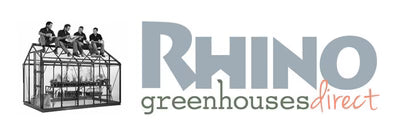Gardeners are often generous with tips and advice for what to do in your garden. But it can also be incredibly helpful to know what not to do. So here, to go alongside your long gardening to-do list, we’ve compiled a list of important to-don’ts.
DON’T Over or Under Water Your Plants
We don’t want to sound too much like Goldilocks, but it really is a case of not too much, not too little, and learning what’s just right for your plants when it comes to watering.
Under-watering your plants can lead to drought stress, and ultimately, your plants not making it through. Each plant will respond differently to a lack of water. You probably already know the signs: leaves curling, browning and falling, stems bending, flowers fading and petals dropping. Some plants can be under-watered and then bounce back from a good drenching, but others need much more carefully managed moisture levels.
On the flip side, over-watering can also cause issues that prevent your plants from thriving. Waterlogged roots can rot, causing the plants to perish from too much, rather than too little, water. The signs may be similar to drought-stricken plants, with discoloured leaves and drooping stems, but the main difference will be that these symptoms are showing while the soil has remained wet (and potentially even soggy!) Some plants are very sensitive to this, and require soil with excellent drainage for their roots to avoid root rot.
Read up what your plants need when it comes to watering. Too much for some can be not enough for others, depending on their type and variant. We recommend learning about the watering needs of your plants, to avoid falling either side of what will help your garden thrive.
DON’T Ignore Soil Health
Another aspect that is fundamental to an abundant garden, is the health of your soil. Ignoring this can mean that all your time sowing and tending to seedlings, and the money that you spend on plugs or more mature plants from shops and garden centres, could go to waste.
Nutrient-starved soil will prevent all but the hardiest of plants from thriving. Taking time throughout the year to look after the health of your soil, will make a huge difference to your borders and beds.
When adding new soil, make sure it is the right type for your plants. Don’t ignore pH levels, and take a moment to learn about what soil types will work best for the plants you are growing.
Don’t skip the all-important step of adding organic matter such as compost or well-rotted manure to your garden. Enriching your soil will pay off in healthy, thriving plants and flowers all across your garden.
DON’T Use Harsh Chemicals Carelessly
Different gardeners have different relationships to using chemicals in their gardens. Some swear by them, for pest and weed control, while others swear off them entirely.
If you do intend to use herbicides and pesticides, do not use them without careful consideration and planning. The unintended negative side-effects of chemicals in the garden range from damage to local wildlife and the ecosystem, to adverse health effects for pets and humans – some chronic, and others acute.
This isn’t to say that all use of pesticide or weed killer is terrible or dangerous. Rather that it’s important to use good sense, research with care, and follow instructions if you do choose to utilise them.
You could also research alternatives, which include introducing natural predators to the pests (we’ve all moved the odd ladybird to a spot with aphids, haven’t we?) and monitoring pest-prone plants to intercept when early stages of an infestation appear. Instead of herbicides, regular weeding and effective mulching are among strategies that can keep weeds at bay, without the use of harsh chemicals.
DON’T Plant Without Planning
We’ve already mentioned research a couple of times here, but beyond that, taking time to plan your garden and where to place plants so that they can thrive and be easily looked after, can make a very big difference.
Don’t just sling a plant in a gap in your flower bed and cross your fingers. Check what light or shade the plant requires, the pH of the soil it needs, and other factors such as whether it is a variety that will spread or self-seed, whether it is fragile in winds and whether it needs any particular support or care.
For example, if you have very thirsty plants in a corner of the garden, don’t add one that requires much less water and could suffer from being waterlogged. Don’t put sun-loving plants in a shady spot, and don’t put plants that need space close together and force them to compete for water and nutrients.
DON’T Neglect Maintenance
Don’t skip those regular garden maintenance tasks that keep your garden healthy.
So many small, regular tasks go into helping a garden to thrive, such as weeding, pruning, dead-heading, and removing dead plants. As well as keeping your garden looking loved and making space for beautiful new blooms, these tasks are important for avoiding pest invasions and diseases spreading amongst your plants.
They may not be the most fascinating tasks, but they can be incredibly rewarding, and many gardeners find them enjoyable.
DON’T Introduce Invasive Species
This is a big one. Whatever you do, do NOT introduce invasive plant species to your garden.
You may have heard horror stories about Japanese Knotweed, which will grow rapidly, outpacing other plants, and take over a garden in no time at all. Anyone selling a house must confirm there is no Japanese Knotweed on the property, as the issues it causes are vast and expensive to deal with. Or perhaps you know more about Giant Hogweed, that also can take over whole areas, and brings the added challenge of phototoxic sap which can cause blisters. Even bamboo can cause issues, by spreading and being extremely stubborn to remove.
You can do huge damage to local biodiversity by planting the wrong species in your garden, not to mention cause a lot of headaches and a huge amount of work or cost for yourself.
So, it is with full-chested emphasis that we say: Don’t plant exotic species without researching whether they are manageable in your garden.
Many gardeners stick to native plants, an approach which can have so many advantages. They are more likely to thrive in local conditions, will bring benefits for native wildlife and don’t pose the risks that those invasive species bring.
We hope you’ve found this list of “Don’t”s helpful, But of course, it isn’t entirely exhaustive. Our top tip is to research: learn about the seeds your sowing, the plants your planting, and the conditions of your garden.
And as we don’t like being too negative, here are a few important “Do”s as well:
- DO make the most of time in your garden every chance you get
- DO cultivate plants that bring you joy
- DO enjoy the challenge and pleasures that gardening can bring!
- Oh, and DO mulch: it really does make a difference.




